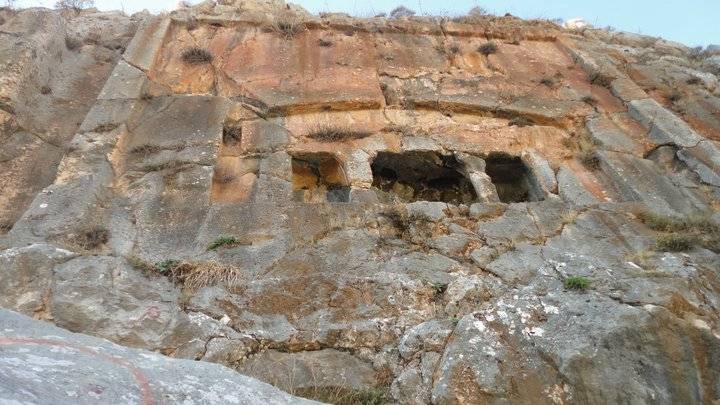
Qab Elias, October 12, 2022. (Credit: Wikipedia. https://nn.wikipedia.org/wiki/Kabelias)
BEIRUT — Carved into a steep limestone cliff overlooking the Bekaa Valley, the monument is located on the southern outskirts of Qab Elias.
Archeologists have compared the site to stone-carved structures found in Petra, Jordan. It is believed to have served Roman religious and funerary purposes.
According to local legend, long ago there was a mirror on the face of the structure that reflected sunlight down into the village, linked to Roman sun worship.
Qab Elias has plenty to offer. In the old souk, one finds heritage houses, the 19th-century church of Saint Elias and the historic mosque and tomb of the Prophet Elijah — dating back to Medieval times.
Of more recent origin is a statue, built in 1927, commemorating the French soldiers Napoleon III sent to Lebanon in 1860.
It doesn't stop there. Perched on a hill not far from Haidara are the remains of the Fakhreddine Fortress, believed to have been built in 1625 by Emir Fakhreddine Maan to control the road connecting Shouf and Beirut to the Bekaa.
In nearby Ras al-Ain, there is a Roman tomb and an Iron Age inscription.
Roman Bekaa
Roman ruins can be found scattered across Lebanon and the Bekaa Valley is home to the ruins of eight Roman temples and countless lesser-known sites.
The Phoenician city-states that once thrived in present-day Lebanon fell under Roman rule around 64 BCE and were administered by Rome or Constantinople until the Muslim conquests of the 7th century.
The Romans reached the Bekaa Valley under Emperor Claudius. The city of Baalbek, which Alexander the Great renamed Heliopolis, was a Roman colony— a hotspot for pilgrims and a breathtaking example of Imperial Roman architecture.
From the first century BC, the Bekaa served as an important source of grain for the Romans. Today, the valley provides up to 40 percent of Lebanon's arable land and is the breadbasket of the country.
Under the Pax Romana (Roman Peace), historically Phoenician cities flourished and became intellectual and economic hubs for the Eastern Roman Empire. Inhabitants of towns like Jbail, Sour and Saida were considered Roman citizens. This period witnessed the construction of various monuments, like the temples of Baalbek, the temples of Mount Hermon and Niha, and various other less-known sites, amongst them, Haidara.